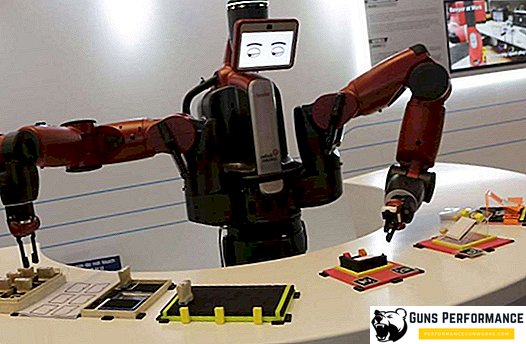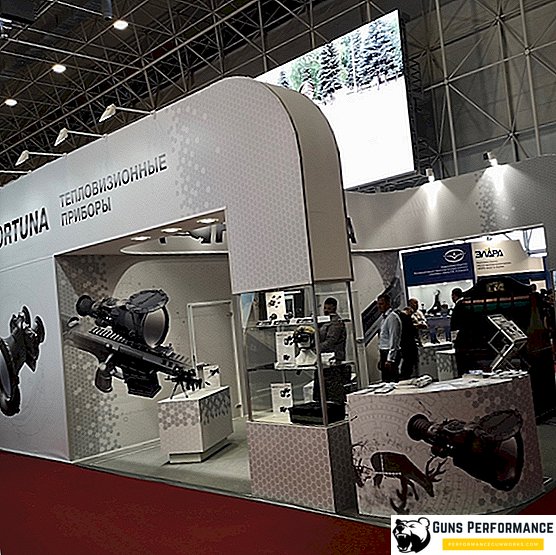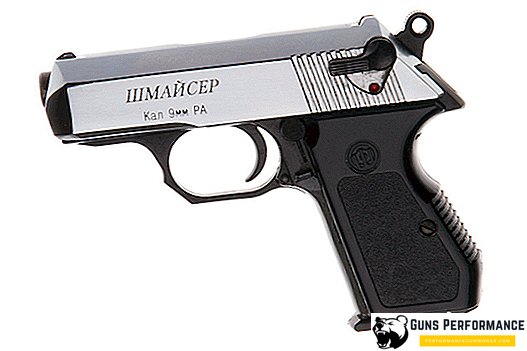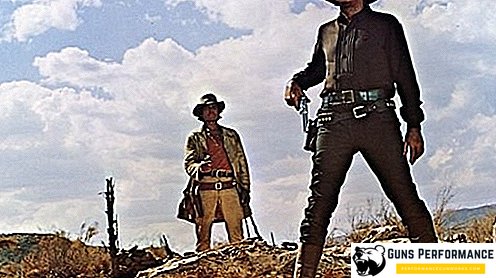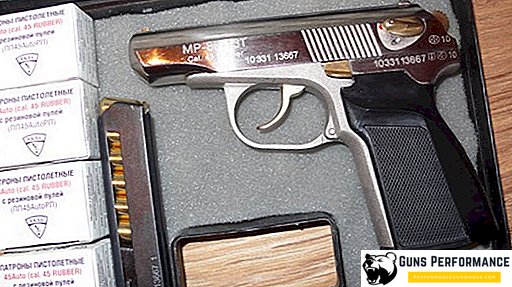Almost immediately after the formation of the state of Israel, its citizens had to take up arms in order to defend their independence. In 1948, the Arab-Israeli war began, the first of many to take place during the second half of the 20th century. The Israelis showed themselves to be good and brave soldiers, but there was one problem: an acute shortage of weapons, including small arms. And what was available was hardly possible to be called qualitative and modern.

Israeli soldiers fought with a variety of weapons left over from World War II: they were both German MP40 submachine guns and British STANs and Soviet PPSh assault rifles. This weapon was not well suited for Middle Eastern theater of operations. A large amount of sand and dust often led to failures and breakdowns.
Among those who experienced all these difficulties and hardships, there was a young lieutenant Uziel Gal - the future designer of the Uzi submachine gun.
Thanks to its excellent qualities, this submachine gun entered the gold collection of small arms. By the way, the designer himself did not want the weapon to be named after him, but this opinion was ignored.
"Uzi" is so convenient, reliable and easy to use that he almost immediately became the darling of the special services and police officers.
History of creation
Immediately after independence, Israel faced an acute need to equip infantry units with new and effective small arms (especially automatic ones) of their own production. In those years, the Israeli industry was still underdeveloped, so the weapons had to be as simple as possible, inexpensive and manufactured without the use of scarce imported components.
It was supposed to be suitable for use in mountain-desert terrain, to be resistant to pollution and effective in the conditions of close combat. Such a weapon was developed by Uziel Gal.
It is known that the future creator of the legendary machine Uzi arrived in Israel back in 1936 from Germany. He was a smuggler of weapons and well versed in it. Had trouble with the law, was sentenced to six years.

It is believed that the principle of his product Gal peeped from the Czech submachine gun Sa vz 23, the design of a talented gunsmith Holecek. This submachine gun really resembles Uzi in its appearance, layout and principles of operation.
At the end of 1949, Gal offered his own version of a submachine gun. Despite his unusual design, he liked the military, it was decided to make an experimental batch of new weapons.
In 1956, the Uzi adopted the Netherlands, several other weapons took part in the competition, but the Israeli machine gun easily bypassed them. In 1959 he was adopted by the Bundeswehr. In the 60s, the famous Belgian arms concern Fabrique Nationale d'Armes de Guerre bought out the license for the production of a submachine gun.
The first large-scale hostilities in 1956 against Egypt showed the excellent fighting qualities of the new weapon. At the end of this war, some changes were made to the submachine gun, but they were more cosmetic (they increased the height of the handle and replaced the stock and forearm material). The fixing of the store in the neck was also improved.
After this, the triumphal procession of a submachine gun began around the planet. Today, Israel Military (the company that produces Uzi) delivers it to 90 countries. Already sold submachine guns worth over $ 2 billion.
In the late 1960s, Uzi Gal, the founder of Uzi, resigned as a lieutenant colonel in the Israeli army. In retirement, he began developing the Galil assault rifle and developing new modifications of his main creation, the Uzi submachine gun.
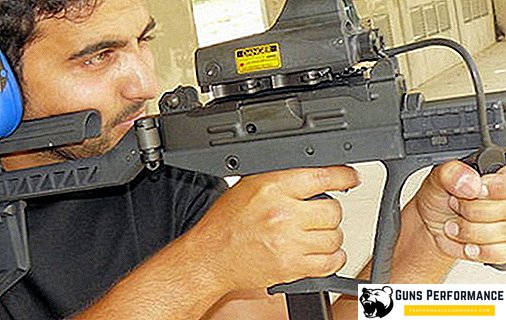
Description
One of the main advantages of Uzi is its excellent balancing, you can shoot from this weapon with one hand. Moreover, it is possible to effectively conduct both single and automatic fire. Although, in single-shot mode accuracy is higher. The handle of the submachine gun (also known as the neck of the store) is under the center of gravity of the weapon, which makes the weapon so balanced.
In addition, the shot is made at the time of the forward movement of the shutter, which reduces the recoil of the weapon and makes the machine even more stable.
"Uzi" works according to the scheme with a free gate, the shot is made almost in the extreme front position of the bolt (the bolt incident on the barrel), which made it possible to make the submachine gun so compact. Most of the barrel of the machine is located directly in the case, placing the store in the handle allowed to further reduce the size of the weapon.
The trigger mechanism has two firing modes: single and automatic. The fire mode translator is also a safety device at the same time, another one is on the back side of the handle, making a shot without covering it with a palm impossible.
Butt folding metal. Different modifications have different designs.
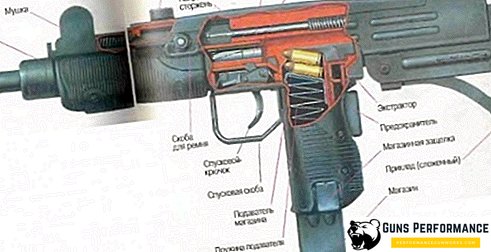
In this submachine gun is used cartridge 9 × 19 mm Parabellum, can also be used and more enhanced cartridge. The machine shop has a different capacity: 25.32, 40 and 60 rounds. Reloading the machine is very convenient, the weapon without problems can be reloaded in the dark or in conditions of poor visibility.
Separately, it should be noted high technology weapons: most of the parts Uzi produced by cold stamping, which causes its low cost and ease of production.
You can also highlight the reliability of "Uzi". This weapon can be thrown into the sand, into the water, just thrown from a great height - it will still shoot. Experts consider this submachine gun "not killed" by weapons.
There are deep pockets made on the side parts of the bolt-box, which help remove dirt, all the details of the Uzi are made with large tolerances, which prevents the weapon from jamming.
On the first samples of this weapon, the forend and butt were wooden, but after testing the Uzi in actual combat, it was replaced with a steel folding one, and the forearm was made of plastic.
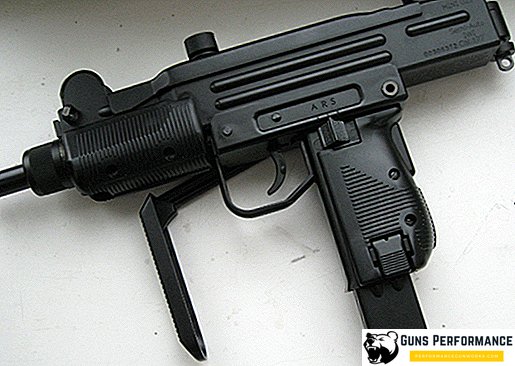
Modifications
During the operation of "Uzi" were created several modifications of this weapon. The changes concerned mainly the size of the weapon and its ergonomics. That is, the designers sought to make this submachine gun even smaller. Here are the main modifications of this weapon that the designers managed to create:
- Uzi-Pistol is a self-loading pistol based on Uzi-Micro. It is impossible to conduct automatic shooting from it, there is no stock, the barrel is shortened by a 115 mm barrel. This model is often used by security personnel, as well as civilians. This model was launched in 1984. The advantage of Uzi-Pistol is the large capacity of the stores, but at the same time it is quite large and heavy, shooting with one hand from this weapon is problematic.
- Uzi Carbine is a self-loading carbine, its barrel is extended to 400 mm barrel. The weapon is developed under the standards adopted in the United States for civilian weapons.
- Mini-UZI - model, with reduced dimensions, compared with the base. It was developed in 1982, the issue began in the mid-80s.
"Micro-Uzi" - an even more compact model, it began to produce since 1987. - Uzi Pro. This modification of Micro Uzi is distinguished by improved ergonomics, Picatinny slats are placed on top and on both sides of the weapon, which allows you to attach additional equipment to it: sights, target indicators, and flashlights.
With the modifications of Micro developers have some problems. When reducing the size of the weapon, the bolt also became smaller, its weight decreased, which increased the rate of fire. If the standard "Uzi" it is 600 rounds per minute, then the "Mini-Uzi" it increased to 950. And the "Micro-Uzi" was very little manageable. Therefore, it was decided to place a heavy tungsten core inside the valve. But this did not help much: the rate of fire of this modification is 1,250 rounds per minute. Standard store it empties in 0.95 seconds.
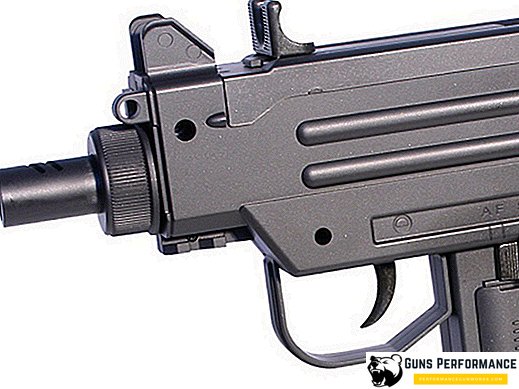
In recent years, there have been modifications of the submachine gun for various types of cartridges.
Specifications "Uzi"
| Type of cartridge | 9 × 19 mm Parabellum |
| Length mm | 640 |
| Barrel length, mm | 260 |
| Weight, kg | 3,5 |
| Rifling | 4 right |
| Magazine capacity, cartridges | 25, 32 |
| Rate of fire, rds / min | 600 |
| Sighting range, m | 200-250 |



